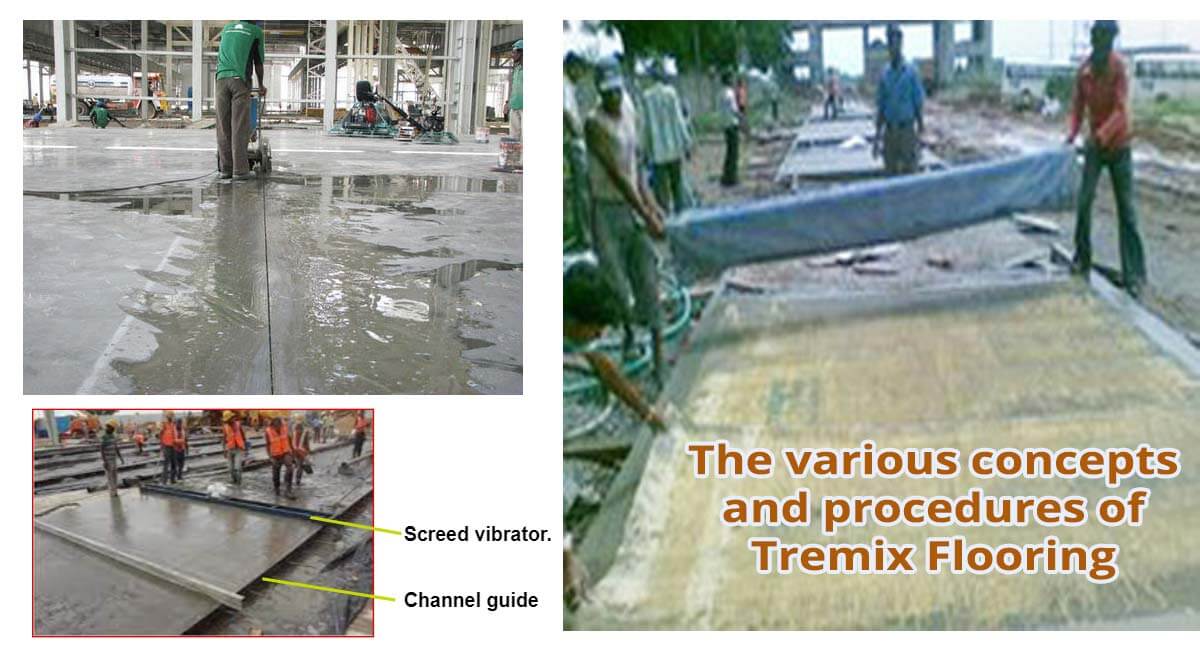The various concepts and procedures of Tremix Flooring
TweetThe Tremix flooring is also known as the Vaccum Dewatering flooring, and it is one of the most commonly used types of flooring in the industrial sector of the world.
A hard surface such as this one is used for the foundations of machine tools, for light load carriers, and for lightweight cranes where a hard surface is necessary. Tremix concrete flooring provides a level of support that is appropriate to the flooring's thickness.
What do you mean by Tremix Flooring?
There is a unique type of flooring known as Tremix flooring that is mainly used as a floor covering for industrial establishments. There is an improvement in the tearing and wearing characteristics of this product. A hard surface like this is often used in the industrial sector when a hard surface is required for the foundation of machines, light load carriers, and cranes that need a firm foundation.
Concrete mix specifications used by Tremix typically include 1 cement, 1.5 sand, and 3 stone aggregates, but a richer mix of 1:1:2 is often recommended for better durability and wear and tear, as it contains more cement, sand, and stone aggregates. Depending on the thickness of the floor covering, the amount of reinforcement required in this flooring varies from 100 to 200 mm, for PCC (1:4:8) or 230 to 300 mm for stone sub-bases that have been properly prepared
What are the instruments required for a Tremix Flooring?
The process of Trimix flooring requires the following tools and supplies:
- A Pump for vacuum dewatering
- A Floater device
- A Double Beam Screed Vibrating Machine.
Here are some Tremix flooring techniques you need to know:
- Make sure there are no loose pieces of debris left on the sub-base by wetting and pounding it. A 230 mm to 300 mm layer of material will be laid on a level surface, and there must also be a specific measurement of thick stones or boulders laid over the surface, and the material must be compacted properly.
- Construction of PCC over stone soling must ensure that the slope of the floor is preserved during installation. The thickness of the PCC should not exceed 100 millimeters.
- There must be a modular method of mixing, with each module having a length of 3.5 meters. It is necessary to install appropriate reinforcing bars in layers of two or one, with a concrete cover covering 50 meters in length.
- In order to remove excess water from the top layer of wet concrete without removing the cement or sand particles, machines that vacuum away surplus water are helpful. In the case of new concrete, this is done just after the concrete has been poured, rammed, or vibrated with a vibrating screed, and is leveled just before the first round of troweling is done.
- Besides increasing the strength of the concrete, it will also increase the resistance of the floor to abrasion. Furthermore, when finishing the floor's surface with a floater machine, it is always recommended that you apply a hardener in order to make it more resistant to abrasion and enhance its durability. It is also possible to reduce shrinkage fractures by using this approach.
- It is also important to add just a little amount of floor hardener and polyurethane fibers to concrete before it is poured in order to prevent shrinkage cracks and promote abrasion of the surface. The producers must specify how much fiber and bonding agent to use.
- In order to avoid shrinkage cracks and serve as expansion joints in vast areas that need to be floored, concrete flooring needs to be cast in panels in order to prevent shrinkage cracks from forming. This is a labor-intensive and time-consuming process.
- Rather than having any joints in the concrete, it is laid out in panels without any building joints. Using a cutting saw, panel joints must be cut after 7 to 10 days after the concrete has been poured, and the concrete is still not completely cured. It is important to use sealants or polysulfide in order to close the gap between the two surfaces.
Tremix Flooring concept may offer the following benefits:
A Tremix flooring concept offers the following advantages:
- Compared to traditional PCC floors, vacuum dewatering floors tend to have a higher compressive strength, which means they have greater tensile strength.
- As a result of Tremix Flooring, you will experience faster initial strength.
- A reduction in shrinkage was achieved with Crack Tremix.
- It reduces the Permeability factor
- Enhance the abrasion resistance of the floor.
This Tremix Flooring concept has a few potential drawbacks:-
The following are a few major disadvantages associated with Tremix flooring:
- Investing a large amount of money at the beginning.
- In order to perform vacuum dewatering, skilled workers are required. Using a vacuum pump for vacuum dewatering is a specialized procedure.
- Dewatering requires the use of power

